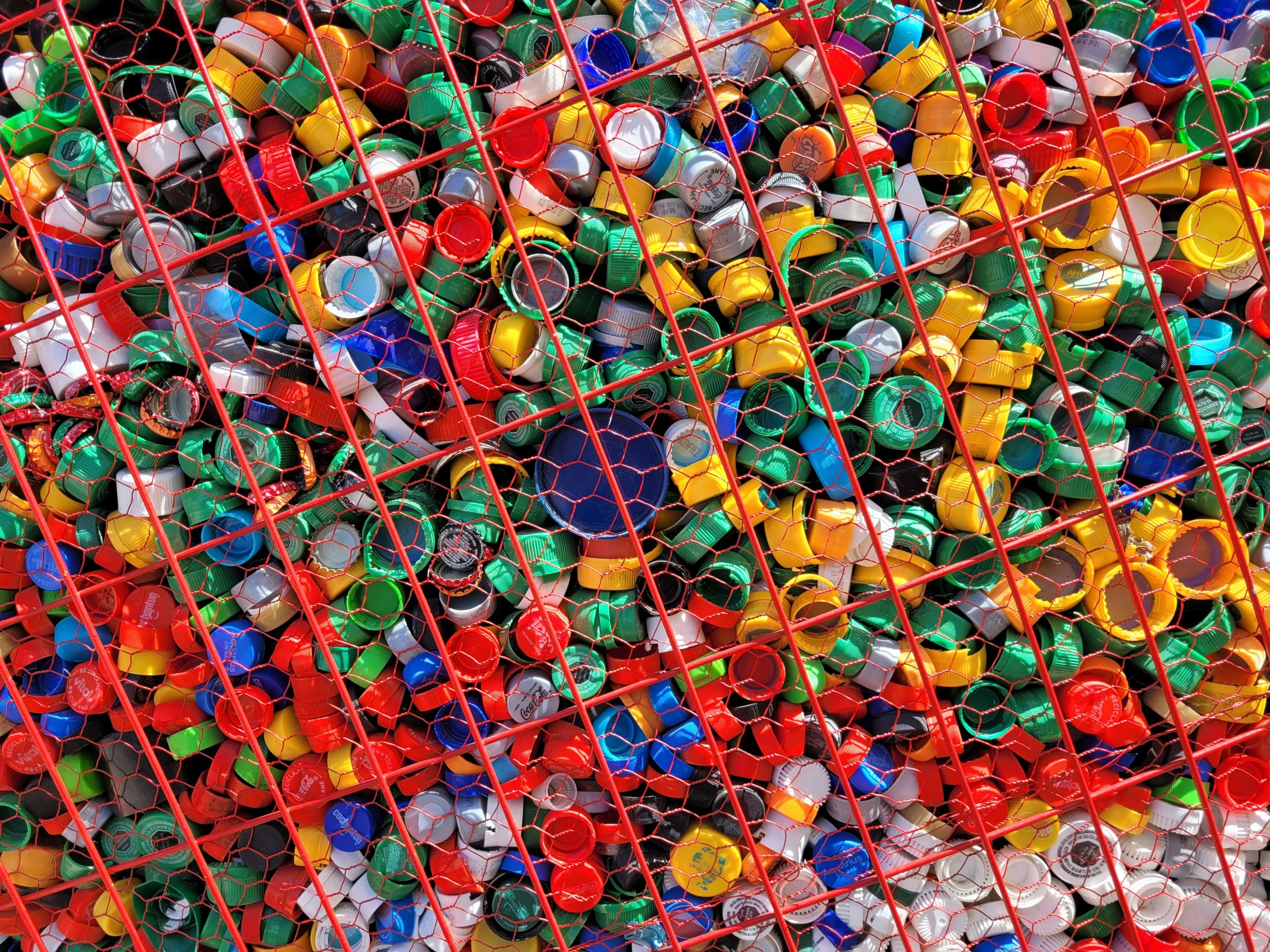The first time I held a bowl made from recycled ocean plastic, I was honestly shocked. I was expecting something that screamed “eco-friendly” in that slightly compromised way many sustainable products do – you know, where you can practically hear them saying, “I’m not quite as nice as the regular version, but hey, I’m saving the planet!”
Instead, what I felt was a smooth, substantial piece with a subtle blue-green marbling that reminded me of looking down at the Caribbean from an airplane window. It was, in every sense, a luxury object. And yet, just months earlier, its raw materials had been floating in the Pacific as discarded fishing nets and water bottles.
This moment changed how I think about recycled materials, especially ocean plastic. It’s no longer just a well-intentioned alternative; in the hands of innovative designers, it’s becoming the star material in some of today’s most covetable home goods.
From Ocean Waste to Objects of Desire
We all know the sobering statistics: 8 million metric tons of plastic enter our oceans annually. If nothing changes, by 2050 there will be more plastic than fish in the sea. But rather than just wringing their hands, forward-thinking designers and brands are rolling up their sleeves and diving in (sometimes literally) to transform this environmental catastrophe into something beautiful.
The result? A new category of luxury homewares that tells a compelling story while standing on their own as objects of desire.
The Pioneers: Brands Leading the Ocean Plastic Revolution
Yves Béhar × Faire Collection
When legendary designer Yves Béhar partnered with ocean cleanup organization Parley for the Oceans, I wasn’t sure what to expect. What they created together – a collection of home accessories crafted from plastic harvested from coastal communities in Indonesia – has redefined what recycled materials can achieve.
Their sculptural bowls feature swirling patterns in oceanic blues and greens, each one slightly different due to the variability of recycled materials. I have one on my coffee table, and it’s always the piece guests ask about – not because I’ve told them its origin story, but because they’re genuinely drawn to its beauty.
What makes these pieces so successful is that Béhar didn’t fight against the inherent qualities of recycled ocean plastic – he celebrated them. The subtle color variations and occasional tiny imperfections become features rather than flaws.
Humanscale: Smart Ocean Chair
Not all ocean plastic innovations are decorative. Humanscale’s Smart Ocean task chair proves that even functional, everyday objects can incorporate these reclaimed materials without compromising performance.
Each chair prevents almost 2 pounds of plastic from polluting the ocean. The recycled content is used in the structural components – parts you don’t see but that do the heavy lifting in terms of durability and function.
I’ve sat in one at a friend’s home office, and if no one had told me about its ocean-plastic construction, I would never have guessed. It’s just a beautiful, supremely comfortable chair. And isn’t that the ultimate luxury? When sustainability becomes so seamless that it disappears into excellent design?
Studio Swine’s Sea Chair Project
On the more conceptual end of the spectrum is Studio Swine’s Sea Chair Project. These designers actually built a device that can be taken onto fishing boats to collect and process marine plastic debris on the spot. Their resulting chairs, stools, and small objects marry industrial design with craftsmanship and contain plastic harvested from specific beaches and ocean locations around the world.
Each piece comes with coordinates of where its materials were collected, creating a direct connection between the object and the specific part of the ocean it helped clean. It’s a powerful reminder that our oceans are real places, not abstract concepts, and our consumption choices have specific geographical impacts.
The Technical Revolution: How They Do It
The transformation from discarded plastic to luxurious homeware isn’t simple. It requires significant innovation at every stage:
Collection & Sorting
Organizations like 4ocean and The Ocean Cleanup employ local communities in coastal regions to collect plastic waste. Others, like Parley for the Oceans, work with fishing communities to recover discarded nets (which make up nearly 46% of the Great Pacific Garbage Patch).
The plastic then undergoes intense sorting – separating different polymer types, removing contaminants, and preparing the materials for processing. This stage often combines high-tech identification methods with human hands-on sorting.
Processing & Transformation
Once sorted, the plastic must be cleaned, shredded, melted, and reformulated into workable materials. Companies like Plastiks and Oceanworks have specialized in creating high-quality plastic pellets from ocean waste that meet the exacting standards of luxury brands.
The real magic happens in the material innovation labs where these recycled plastics are combined with other materials or additives to create composites with specific aesthetic and performance characteristics. Some brands develop proprietary blends that can mimic the look of stone, wood, or other natural materials while maintaining the durability advantages of plastic.
Design & Manufacturing
The final stage requires designers who understand both the limitations and unique opportunities of these recycled materials. The best ocean plastic products aren’t just conventional designs made with different materials – they’re objects that could only exist because of the specific properties of their recycled content.
Beyond the Blue: The Evolving Aesthetic of Ocean Plastic
Early ocean plastic products leaned heavily on blue and green colors that directly referenced their marine origins. While these remain popular, we’re now seeing a more sophisticated range of aesthetic approaches:
Terrazzo-Like Composites
Brands like Säie Studio are creating stunning terrazzo-like surfaces where the ocean plastic becomes visible flecks within a composite material. Their coffee tables and trays feature a constellation of colorful specks suspended in a neutral base, creating contemporary pieces that reference traditional Italian terrazzo while telling a completely different material story.
Gradient Collections
Designer Sophie Rowley’s Bahia Denim series showcases another approach, with pieces that feature subtle gradients of blue and green, mimicking the topography of ocean floors. These sculptural objects blur the line between functional homewares and art pieces.
Monochromatic Sophistication
Moving away from obvious ocean references, some designers are creating sophisticated monochromatic pieces where the recycled content isn’t visually apparent. Normann Copenhagen’s Luna collection features deep blacks and crisp whites that would be at home in any minimalist interior, with only a small marker indicating their sustainable origins.
The Future: Where Ocean Plastic Design Is Heading
As material science advances and consumer awareness grows, we’re seeing several exciting trends emerging:
Hybridization with Natural Materials
The most innovative brands are now combining ocean plastic with natural materials like responsibly harvested wood, cork, or plant fibers. The resulting hybrids offer unique aesthetic possibilities while improving the overall sustainability profile of the finished products.
Broom’s console tables feature wooden tops with bases made from ocean plastic, creating a beautiful material dialogue between natural and reclaimed elements.
Transparency in Sourcing
Consumers increasingly want to know not just that a product contains ocean plastic, but exactly where it came from and the impact of its removal. Forward-thinking brands are embedding QR codes or NFC chips in their products that allow customers to trace the journey of their specific item’s materials.
Beyond Plastic: Ocean Waste as Luxury Material
The next frontier involves other types of ocean waste. Sea leather made from kelp, textiles incorporating reclaimed fishing nets, and even acoustic panels made from seashell waste are all beginning to appear in high-end interior collections.
The Human Element: Communities Behind the Cleanup
What often gets lost in discussions about ocean plastic is the human story behind the materials. In coastal communities most affected by plastic pollution, cleanup efforts are creating new economic opportunities.
Brands like Ocean Sole in Kenya transform washed-up flip-flops into colorful home accessories while providing stable income for local artisans. Their vibrant animal sculptures and home accents have become collectibles, sought after for both their visual appeal and their positive social impact.
Similarly, Net-Works has established community banks in coastal villages in the Philippines and Cameroon, where residents can exchange collected fishing nets for access to financial services. These nets eventually become beautiful carpet tiles through their partnership with Interface.
Living With Ocean Plastic: In My Own Home
I’ve slowly been incorporating ocean plastic pieces into my own home, and what strikes me is how naturally they fit with items made from conventional materials. My recycled plastic serving tray sits alongside ceramic dishes and wooden cutting boards in my kitchen, complementing rather than competing with these traditional materials.
What I love most is the conversation these pieces start. When friends ask about that unusual blue vessel on my bookshelf or the textured planter holding my fiddle leaf fig, it opens up a discussion about oceans and innovation that’s rooted in something tangible and beautiful – not just depressing statistics.
These objects remind us daily that environmental solutions don’t have to be about sacrifice. They can actually bring more beauty, more innovation, and more thoughtful design into our lives.
Finding Your Own Ocean Plastic Treasures
If you’re inspired to add some ocean plastic pieces to your own home, here are a few places to start:
- Oceanworks Marketplace connects consumers directly with verified ocean plastic products from multiple brands
- 4ocean’s Home Collection offers everything from coasters to serving trays
- Patagonia’s home goods occasionally feature ocean plastic components, particularly in storage solutions
- Ikea’s MUSSELBLOMMA collection offers affordable everyday items made from plastic recovered from the Mediterranean
When selecting pieces, look for transparency about sourcing and processing. The best brands are upfront about exactly how much recycled content their products contain and where that material originated.
The Bigger Picture: Why This Matters
Beautiful objects made from ocean plastic won’t solve our pollution crisis alone. We still need better waste management systems, reduced plastic production, and smarter packaging. But these luxury homewares do something perhaps equally important – they change how we perceive recycled materials.
When ocean plastic can become objects we truly desire, not just accept as the “less bad” option, it shifts our relationship with waste. It helps us see that the materials we discard still hold value and potential beauty.
And perhaps most importantly, these pieces prove that sustainability and luxury aren’t opposing concepts. The most forward-thinking, innovative design being created today embraces environmental responsibility not as a constraint but as a creative catalyst.
As more designers and brands embrace this approach, I’m excited to see how today’s environmental challenges will continue to inspire tomorrow’s most coveted objects. The future of luxury isn’t just about rare or expensive materials – it’s about meaningful materials with stories worth telling and impacts worth celebrating.
Have you brought any ocean plastic pieces into your home? I’d love to hear about your favorites in the comments below!

